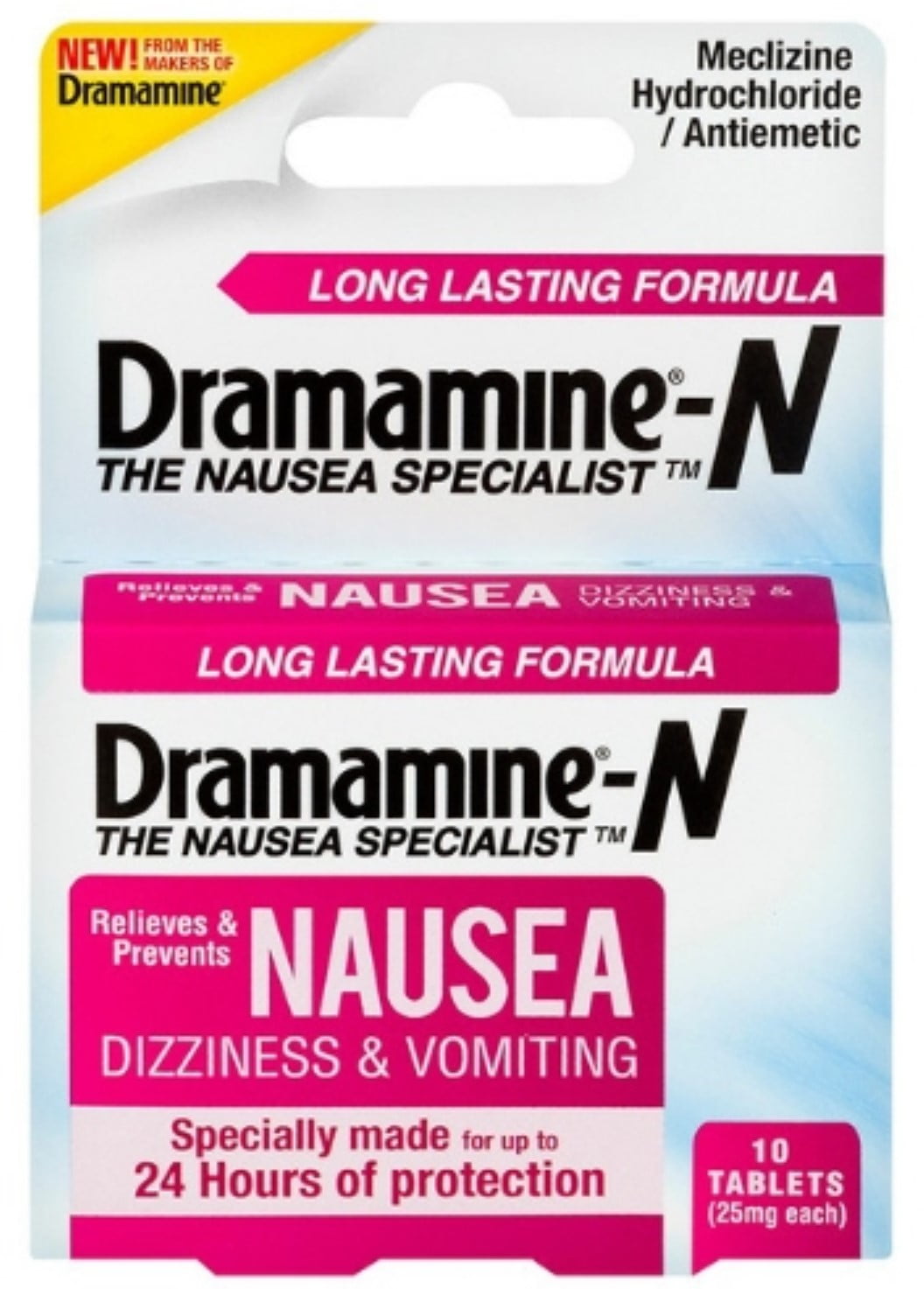

Prevention and treatment of motion sickness in children. It was rated by participants (n=79, mean age 8.4 years) to be effective in preventing car sickness, with a low level of adverse effects. The only study of anti-motion sickness drugs specifically in children was in an open study with cinnarizine. Toxic psychosis has been reported in children using this treatment.Ĭinnarizine and its derivative flunarizine are piperazine antihistamines with vasodilating actions of calcium channel blockers. These patches have been shown to provide effective motion sickness prophylaxis for 72 hours, but have not been evaluated in younger children.
#MOTION SICKNESS MEDICINE NON DROWSY PATCH#
Hyoscine as a transdermal patch is available overseas for children older than 10 years. The prism glasses were thought to decrease the discrepancy between visual and vestibular cues and thus to reduce the negative effects of vertigo. It may cause mild gastrointestinal upset.Ī study using prism glasses from the 1980s reported a significant decrease in vomiting episodes in children (n=201) prone to motion sickness. Ginger inhibits thromboxane synthetase and in high doses may potentiate the effects of anticoagulants, for example aspirin, heparin and warfarin. There has not been more than anecdotal evidence of the efficacy of ginger for prevention and treatment of motion sickness in children. 9 Studies have shown reduced nausea in patients with hyperemesis gravidarum, postoperative nausea and vomiting and in a study using a revolving chair simulating motion sickness. Ginger (Zingiber officinale) has been used for centuries for its antiemetic properties. Placebos have provided benefit in up to 45% of cases in controlled studies. There are no studies in children, although wristbands are marketed for this age group.

Studies in adults using acupuncture wristbands, which activate the P6 Neiguan acupuncture point (5 cm above the wrist), show relief of nausea in pregnancy and after chemotherapy, but evidence for efficacy in motion sickness is contradictory. Non-sedating antihistamines, such as loratadine and cetirizine, penetrate poorly into the central nervous system and are not effective against motion sickness. While diphenhydramine is used overseas for motion sickness prophylaxis in children, this is not an approved indication in Australia. Timing varies, but they should be given at least 30 minutes before travelling. Promethazine theoclate, promethazine hydrochloride and dimenhydrinate are approved in Australia for prevention and treatment of motion sickness. They should be avoided in children with seizure disorders. These drugs cause anticholinergic adverse effects of excitability, agitation, drowsiness, dry mouth, blurred vision and constipation. 7 This is now in line with New Zealand regulations. In Australia, sedating antihistamines have recently become prescription-only for children less than two years of age. 6 There are no specific paediatric data for these drugs in motion sickness and dosing has been extrapolated from studies done in adults. Fatalities have been reported when over-the-counter products containing antihistamines were given to young children to treat coughs and colds. Given their lack of efficacy and potential to cause serious adverse drug reactions, such as hallucinations, agitation and breathing difficulties, antihistamines (H1 receptor antagonists) should not be used to prevent or treat motion sickness in children less than two years of age and should be used with caution in older children. Hyoscine is less sedating than antihistamines, but has more anticholinergic effects. Studies were predominantly in adult males. Try to keep calm – motion sickness is more likely to happen if a child is worried about having an episodeĮfficacy and safety Hyoscine hydrobromide (scopolamine)Ī systematic review of 14 controlled trials involving hyoscine found it to be more effective than placebo, but not superior to antihistamines.Ensure ventilation either from open window or air conditioning – avoid overheating.Feed the child a light snack before travelling – avoid heavy, greasy meals.Have the child recline as much as possible.If flying, sit over the aeroplane wing – the ride tends to be less bumpy.If travelling by car, seat child near the front of the vehicle, that is, middle rather than third row in a larger vehicle.Avoid unnecessary head movements by using pillows or a headrest.Do not encourage reading or focusing on games while travelling.out of the window, on the horizon where practical Focus child's attention elsewhere, e.g.Box Simple ways to prevent travel sickness 2, 4


 0 kommentar(er)
0 kommentar(er)
